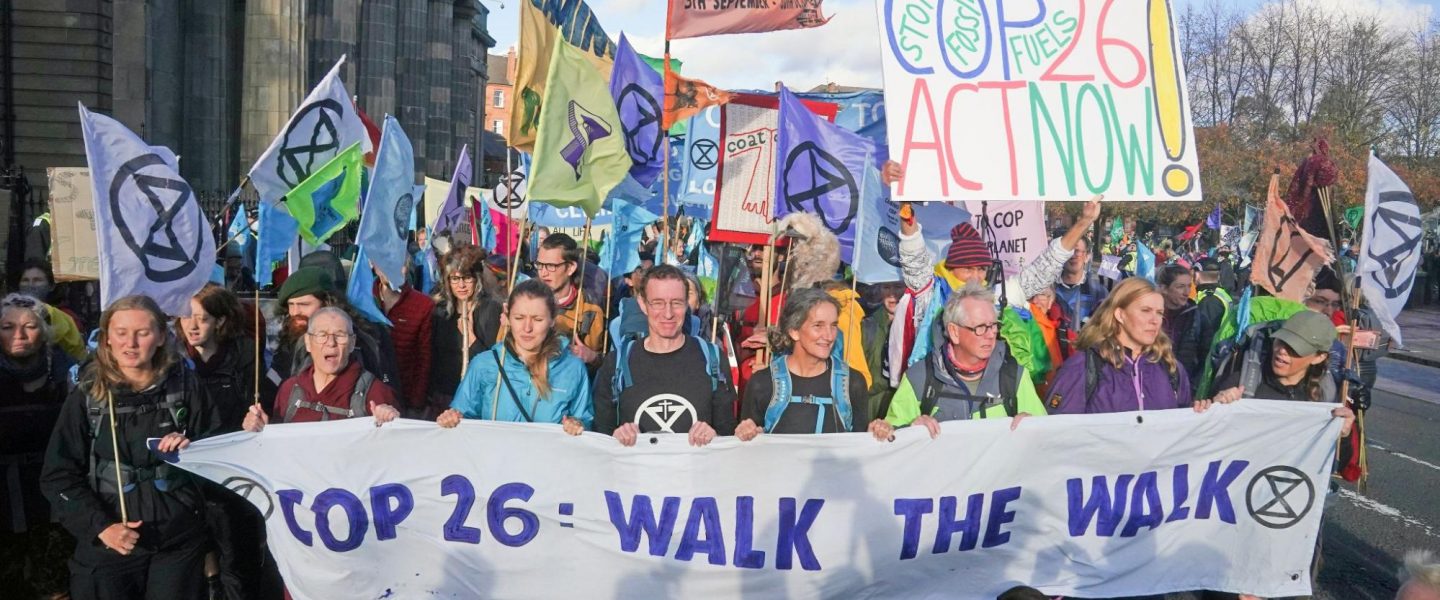In the second week of COP26, negotiators must hammer out the details of key agreements to turn promises into action.
World leaders have come and gone from the much anticipated international climate conference in Glasgow. While they announced some significant commitments to combat the climate crisis, the devil is always in the details. Negotiators must now hammer out the specifics that will determine if COP26 will be written into history as a success or failure.
“The first week of COP26 has resulted in a lot of promises to curb the climate crisis,” said Brian Wygal, director of environmental studies and sciences at Adelphi University. “But the world has heard these promises before. … We need actions, not words.”
Critics like Greta Thunberg and thousands of other young environmental activists who filled the streets outside the conference charge that the fix is already in. “The leaders are not doing nothing. They are actually creating loopholes, shaping frameworks to benefit themselves to continue profiting from this destructive system,” Thunberg said.
After the first week, here are the biggest headlines so far at COP26, known formally as the 26th Conference of the Parties:
- For the first time, leaders committed to a series of measures that, when combined, would put the world on track to stay below 2 degrees Celsius (below 3.6 degrees Fahrenheit) of warming, according to research from the University of Melbourne.
- More than 100 countries signed on to a declaration to end deforestation by 2030. The nations represent 85 percent of the world’s forests.
- More than 100 countries, including the United States, agreed to cut their methane emissions by 30 percent by 2030.
- More than 40 countries committed to phasing out their coal-burning power plants by the 2030s or 2040s, including heavily coal-reliant countries like Canada, South Korea, Poland, and Indonesia.
- For the first time, India committed to reaching net-zero greenhouse gas emissions (albeit not until 2070). India is the world’s fourth largest annual emitter of carbon dioxide.
- More than 40 nations, including India, China, the United States, the UK, and the members of the EU joined the Glasgow Breakthrough Agenda, agreeing to coordinate the release of clean energy technologies to drive down their cost.
- Twenty countries, including the United States, promised to end public funding for fossil fuel projects abroad and funnel the money to green energy projects instead.
- The G-20 agreed to stop financing coal-burning power plants overseas.
- A group of investors, banks, and insurers with collective control of $130 trillion committed to reaching net-zero emissions across their portfolios by 2050, forming the Glasgow Financial Alliance for Net Zero.
- The Global Energy Alliance, a group of international development banks and philanthropic foundations, pledged $10.5 billion to help developing countries transition to renewable energy. The group aims to create 150 million jobs and raise $100 billion for the clean energy transition in the developing world.
- The UK, EU, US, France, and Germany signed off on the Just Energy Transition Partnership, pledging $8.5 billion to help South Africa shift from coal power to renewables.
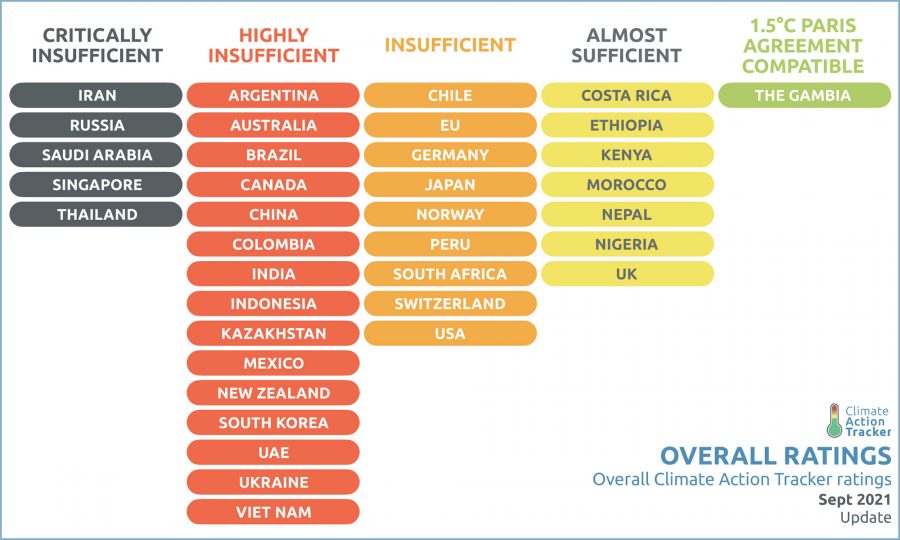
For observers like Patrick Brown, an assistant professor in the department of meteorology and climate science at San Jose State University, the key is not the public pronouncements in Glasgow, but what countries actually do domestically. “Emissions are going to be addressed by domestic policies at the level of each country,” he said, “not pledges at these international meetings where everyone has a social incentive to overpromise and the pledges are nonbinding.”
With critical details still left to be sorted out and less than a decade remaining until 2030, the deadline for many emissions-reduction targets, here’s what you need to know about the lofty goals of COP26:
Keep 1.5 Alive
Preventing the worst effects of climate change by limiting global warming to 1.5 degrees Celsius (2.7 degrees Fahrenheit) is the goal underpinning all others at COP26, especially because studies have highlighted the tremendous difference an extra half-degree would make.
That small difference between 1.5 and 2 degrees Celsius is very significant, according to an October report from the Intergovernmental Panel on Climate Change, a group of the world’s leading climate scientists. For example, with a 1.5-degree rise in temperature, 14 percent of the world’s population would be exposed to severe heat at least once every five years, and an ice-free Arctic summer would happen at least every 100 years. At 2 degrees, those numbers worsen to 37 percent and once every 10 years. The extra half a degree of warming would result in twice as many plant and animal species going extinct. A 1.5-degree temperature increase would kill 70-90 percent of coral reefs, while a 2-degree temperature increase would eliminate almost all the world’s coral reefs.
Six years ago, leaders who gathered in Paris did agree to keep warming below 1.5 degrees, but each country was to set its own goals — called nationally determined contributions (NDCs) — for reducing greenhouse gas emissions and responding to the threats of climate change. The first round of NDCs fell short, however, putting the world on track to warm by more than 2.5 degrees Celsius by 2100. And in the years since the adoption of the Paris Agreement, emissions have continued to rise, falling only slightly during the COVID pandemic in 2020. The small West African nation of Gambia is the only country on track to meet the targets it set in Paris, according to Climate Action Tracker.
The signatories of the Paris Agreement agreed to submit updated NDCs every five years, and ahead of this year’s conference, 118 countries had done so. Taken together, they covered about 90 percent of the world’s emissions, according to Climate Action Tracker.
Heading into the conference, some powerful economies, including the US, UK, EU, and China, submitted stronger NDCs, but others, including Australia, Brazil, Indonesia, Mexico, and Singapore, had not committed to tougher emissions-reduction targets.
Even for those that did commit to strengthening their climate policies at COP26, there is no guarantee that they will make good on their commitments unless an enforcement mechanism is created. “There’s the stated goal that they have at the national level and then what might actually happen, and those are not necessarily the same thing,” said Brown.
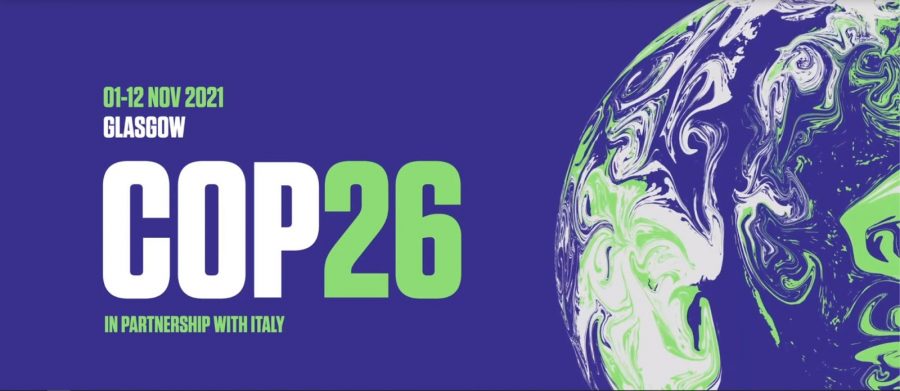
Ditch Coal
UN Secretary-General António Guterres has urged all governments and private companies to “end the deadly addiction to coal.” Nearly 40 percent of the world’s carbon dioxide emissions came from the burning of coal in 2019.
However, several Asian countries — especially China — stand in the way. Despite its target of reaching carbon neutrality by 2060, China built three times more coal power capacity in 2020 than the rest of the world combined, according to Global Energy Monitor and the Center for Research on Energy and Clean Air.
China, India, Japan, and the US are notably absent from a COP26 pledge to phase out coal-burning power plants.
India, Indonesia, Japan, and Vietnam, along with China, are responsible for 80 percent of the world’s planned new coal plants, according to Carbon Tracker. India, Indonesia, and Vietnam must rely on coal power to pull millions of people out of poverty, but China and Japan, as more developed economies, are in a better position to switch to renewable energy.
Encourage Investment in Renewable Energy
Since the Paris Agreement was adopted, the price of renewable energy worldwide has fallen significantly, leaving less reason for countries to justify their continued reliance on fossil fuels. The costs of offshore and onshore wind, solar photovoltaic panels, and concentrating solar power (which uses mirrors to concentrate sunlight) all fell substantially in 2020.
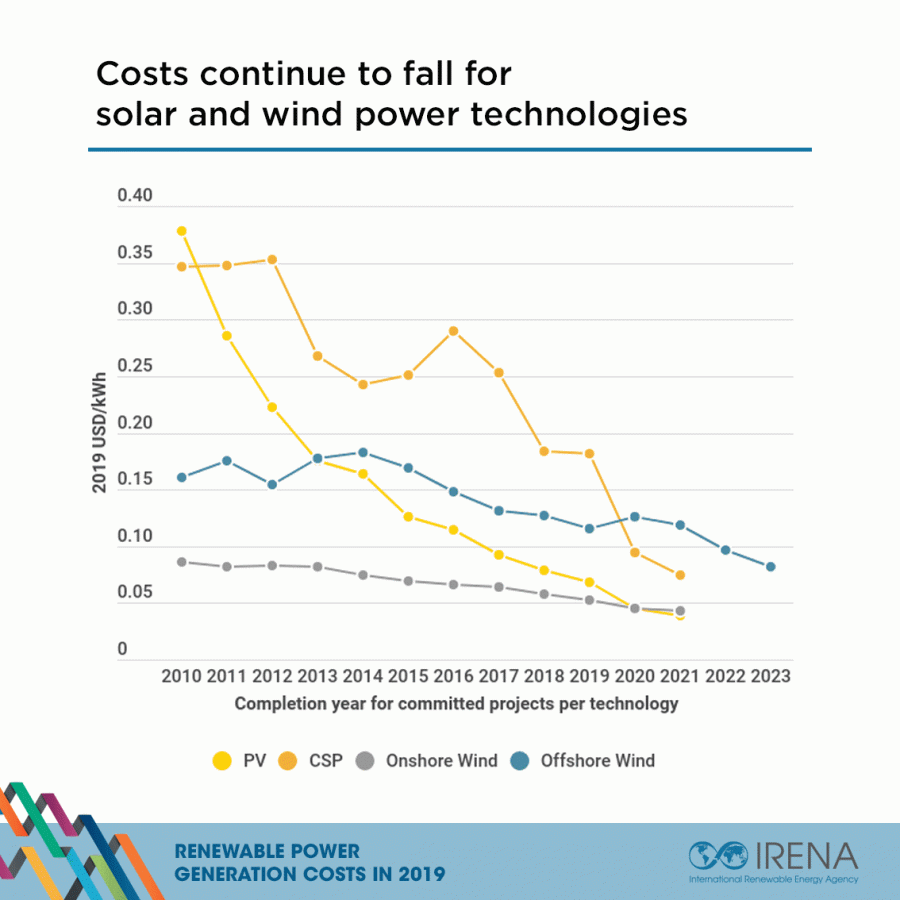
The International Renewable Energy Agency found that solar panels are a consistently cheaper form of energy production than new coal- and gas-fired power plants in most places around the world.
“Clean energy technologies, particularly wind and solar and battery technologies, have advanced substantially over the last 10 or 20 years, and it really is a different economic investment picture today than it was even five years ago,” said Robert Darrow, a politics instructor at Mount Holyoke College whose research focuses on a clean energy transition.
Secure International Finance
Developed nations agreed more than a decade ago that by 2020, they would collectively give $100 billion a year to developing nations to help them mitigate — and adapt to — climate change. They fell one-fifth short on that promise in 2019, giving an estimated $79.6 billion. This funding is considered vital to limiting global warming as developing countries have said they are only willing and able to take action with help from the developed world.
John Kerry, the US special envoy for climate change, said he was confident developed countries would follow through on their $100 billion promise by 2023.
But even $100 billion is not enough, according to Kingsmill Bond, an energy strategist at Carbon Tracker. “It’s actually not very much money in the scheme of what’s required,” he said. “It needs to be seen in the context of a much bigger shift.”
Kerry agrees that the $100 billion is just a fraction of what’s needed. He hopes that banks will step up to the plate. “$100 billion doesn’t do it,” he said. “The only way we’re going to get it done is if trillions of dollars are forthcoming, and they are.”
This funding is crucial if developing nations are to move quickly toward renewable energy, skipping over the period of heavy reliance on fossil fuels that helped catapult the world’s rich nations to their current status.
Developing countries are also pressuring rich nations to pay for their past emissions. “This finance is not charity,” said Sunita Narain, director general of the Centre for Science and Environment, based in New Delhi, India. “This finance is to make sure the polluters pay the cost [of polluting] so the emerging countries can actually do things differently.”
In some cases, where the governments of rich countries have left a gap between what they say and what they do, the private sector has stepped up to the plate. The Global Energy Alliance, a group of banks and private foundations, aims to raise $100 billion of its own to help developing countries in the fight against climate change.
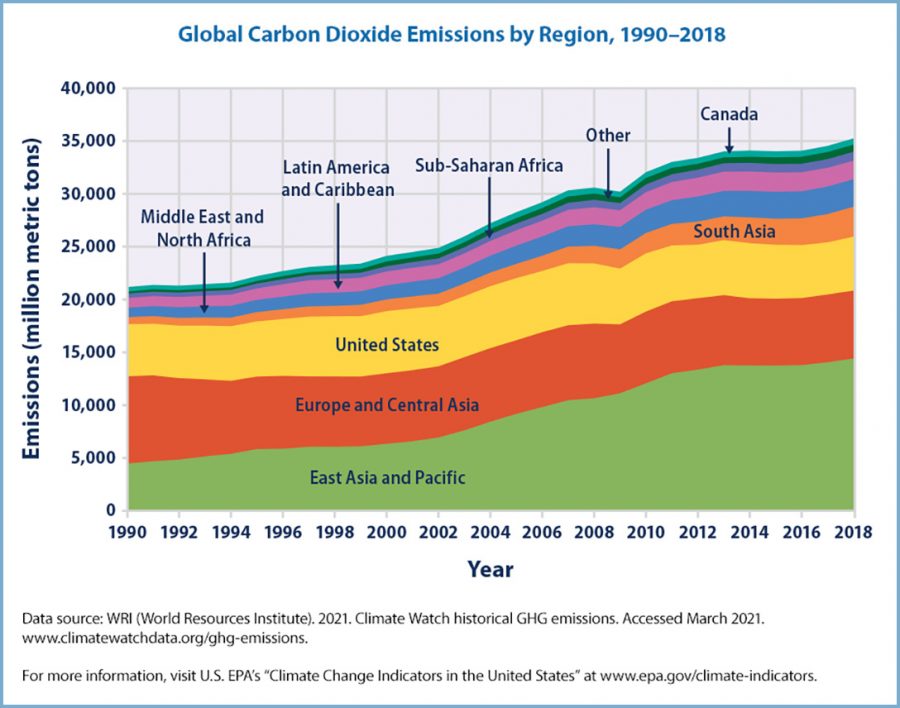
Improve Access to Climate Funds
At the same time, the world is waking up to the need for improved access to existing climate funds. In March of this year, the Green Climate Fund approved just over $1 billion for 15 climate mitigation and adaptation projects in developing countries. However, only 1.5 percent of the money went directly to institutions in those nations, according to the World Resources Institute. Most of the funds first passed through institutions like the United Nations Development Programme or the World Bank before being dispersed. Not only does this delay the projects, it also shifts control of development efforts away from the countries that should benefit from them.
“The reality is that we’re actually taking choice and autonomy away from the societies we’re trying to help. A lot of times we’re pushing policies that are not locally appropriate or helpful,” said Daniel Beers, an associate professor in the department of justice studies at James Madison University, whose research focuses on global poverty and humanitarian aid. “There’s been a really, really long history of the global north pushing policies that benefited [rich countries] in the name of development or humanitarian aid. I think it’s fundamentally important that you actually put control in the hands of the countries that are trying to address these issues in their own societies.”
In response, the UK and Fiji spearheaded the establishment of a taskforce that aims to address the “urgent need to streamline access to climate finance.” They are working alongside Bhutan, Belize, Malawi, Rwanda, Senegal, Germany, Sweden, and the US, as well as the Green Climate Fund and the World Bank, to address these issues.
Iron Out Enforcement
As historic as the Paris Agreement was, it left plenty of room for improvement. “A big weakness of the Paris Agreement,” said Darrow, is that the commitments agreed to by signatories were essentially voluntary: “There is no enforcement mechanism.”
Streamlining the way reductions in carbon emissions are tracked and measured is key to developing a common system so that the world’s nations can hold each other accountable. This is what the organizers of COP26 called finalizing “the Paris rulebook.” Finding a way to enforce targets is critical if the world is to stay below 1.5 degrees of warming.
“If we don’t have global rules that will restrain every country, we will find that in every decade there will be a new super-polluter,” said Narain.
But ironing out enforcement could be tricky, as developing nations look to rich countries to compensate for their decadeslong emissions. Beers points to the need for historical emitters to do their fair share. “To me, justice looks like the bigger, more powerful countries — not just North America and Europe, but some of the middle-income countries — taking responsibility for the share of the problem that they’ve created and not requiring that small, under-resourced countries make the same changes at the same pace that they will,” he said.
Set Rules for International Carbon Markets
Delegates have been trying to sort out the rules for international carbon markets since they were originally written into the Paris Agreement. Carbon markets do two things: Encourage countries to do as much as they can to combat climate change (even more than promised in their NDCs) and help countries that are struggling to meet their targets.
They do this by allowing countries that have surpassed their commitments to sell credits to countries that have been unable to meet their own targets. If structured correctly, carbon markets can provide incentives to get the world on track to combat climate change. But the rules are complicated, and if delegates fail to work through the nuanced issues of carbon credits, rich countries could end up using them as a way to avoid taking real action.
Advance Adaptation
Speeding up adaptation efforts is another major issue in the fight against climate change.
Take Bangladesh, for example, where more than 10 million people have already become climate migrants, according to Shahriar Alam, the country’s minister for foreign affairs. Bangladesh’s low-lying lands, dense population, poor infrastructure, and heavy reliance on farming put its people at risk, especially when rising seas increase the land’s salt content, wiping out crops. To counter this threat, Bangladeshi farmers have been experimenting with more salt-resistant strains of rice and developing innovative solutions like floating seedbeds.
Half a world away, the Netherlands is also experiencing sea level rise and flooding, which threaten to leave the country entirely underwater sometime in the next century. The Dutch, however, have employed a number of innovative solutions to keep rising seas at bay.
In January, the two countries, joined by the UK, Egypt, Malawi, Saint Lucia, and the UNDP, formed the Adaptation Action Coalition, which has grown to 38 member countries. The group aims to “accelerate global action on adaptation to achieve a climate-resilient world by 2030.” Among possible adaptations: improving early warning systems, building more resilient infrastructure, boosting flood defenses, and restoring natural habitats.
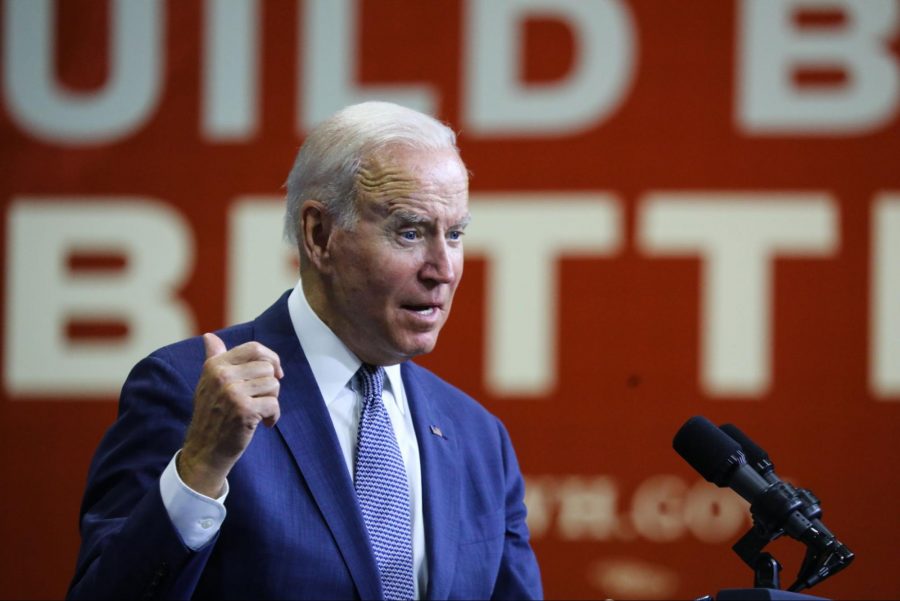
The US in the Spotlight
President Joe Biden has had to patch up America’s reputation at COP26, as the US is the only country to have left and rejoined the Paris Climate Agreement. In his speech on November 1, he apologized to the world for his predecessor’s decision to pull the United States from the Paris Agreement.
“There’s a lot of skepticism from the global community about the United States right now, so [Biden is] kind of paddling upstream against that,” said Darrow, who explained that the nation’s dramatic shift in climate policy under Donald Trump left the rest of the world wondering if it could revert back to its old stance with the next president.
Biden has attempted to strengthen the nation’s climate action by announcing a goal to be carbon neutral by 2050. He has also introduced legislation that includes substantial funds to fight climate change in the US.
Congress recently passed an infrastructure bill, including $47 billion in funds for climate resilience, which will help Americans prepare for the rising number of extreme weather events. A larger spending bill including more than $500 billion for efforts to fight climate change remains in limbo. This bill includes $320 billion in tax credits for renewable energy development.
